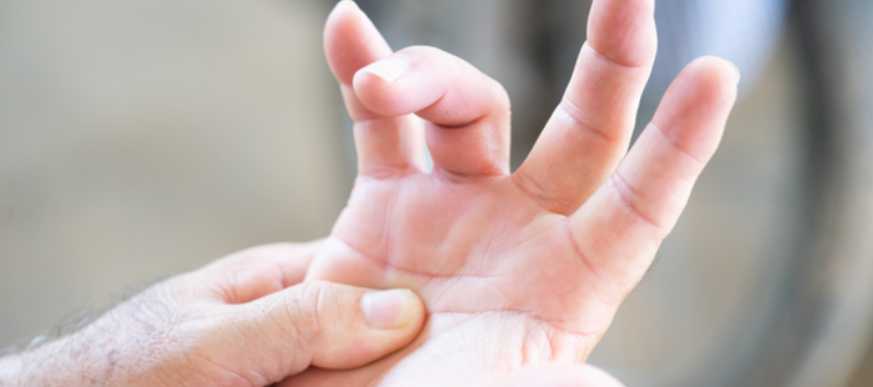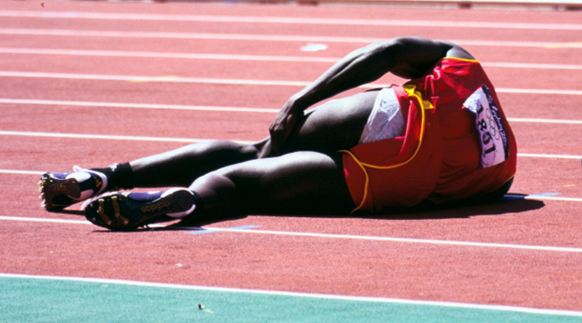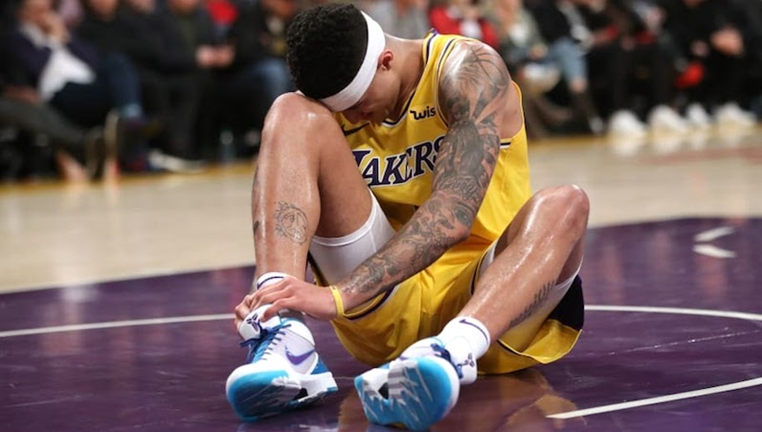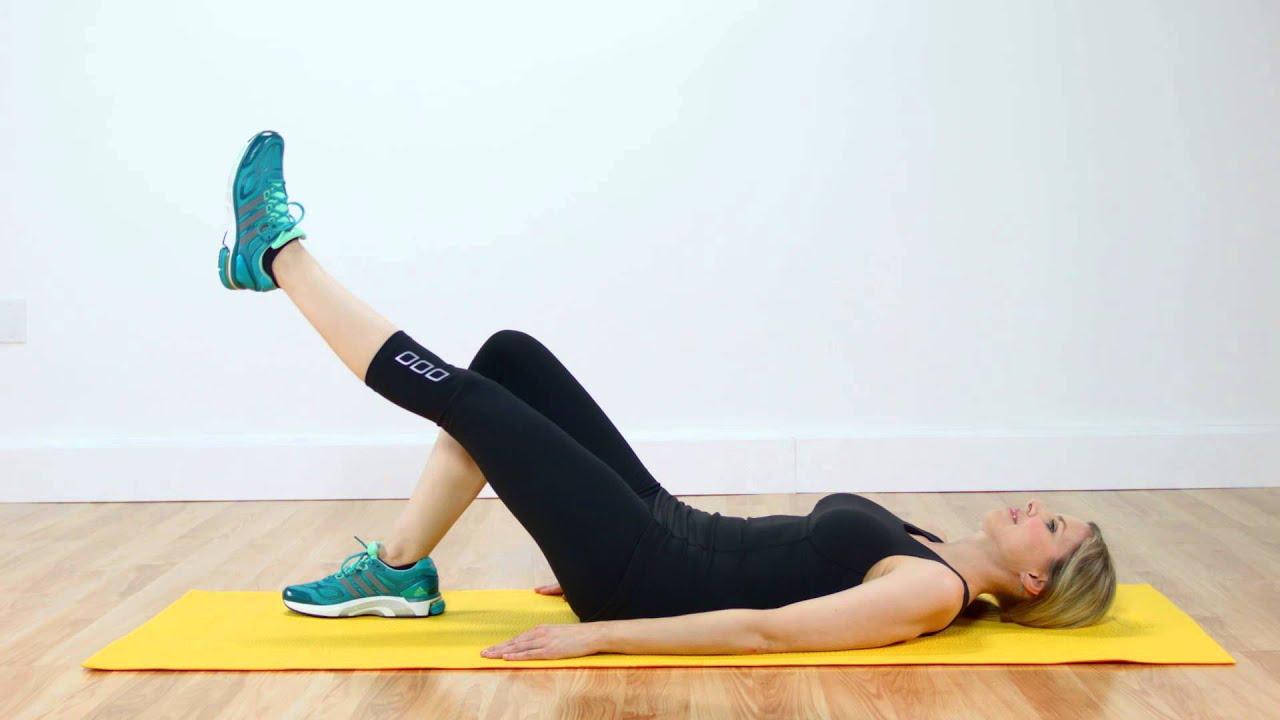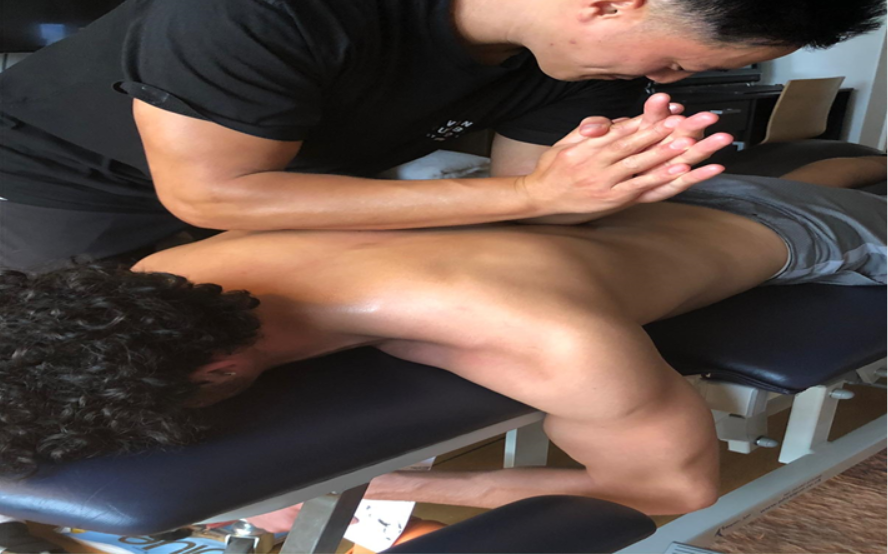UNDERSTANDING THE BENEFITS OF RED LIGHT THERAPY:
DISCUSSING HOW RED LIGHT THERAPY CAN HELP WITH SPORTS RELATED INJURIES: A RECOVERY BASED APPROACH
Surely you have found it in the aesthetic clinic, maybe the Acupuncture Clinic and also in the office of your sports physiotherapist clinic in Manchester. Near-infrared light lamps are offered as a solution for wrinkles, muscle injuries, cellulite, and acne. However, much has been said on the usefulness of this type of therapy but currently there are many ongoing studies being carried out in order to determine what conditions can be exactly treated and tackled by this kind of low-level light therapy program. It has been shown photobiomodulation produced by Red light therapy has been proven to remarkably improve performance and speed up recovery process of elite rugby players (Douglas S Johnson et la, 2016).
The layers of the skin have a high content of blood and water that allows the absorption of light with each wavelength, which has positive and different effects on the skin. Light therapy is an advanced technology that uses specific wavelengths of light to provide the following benefits according to the type of light.
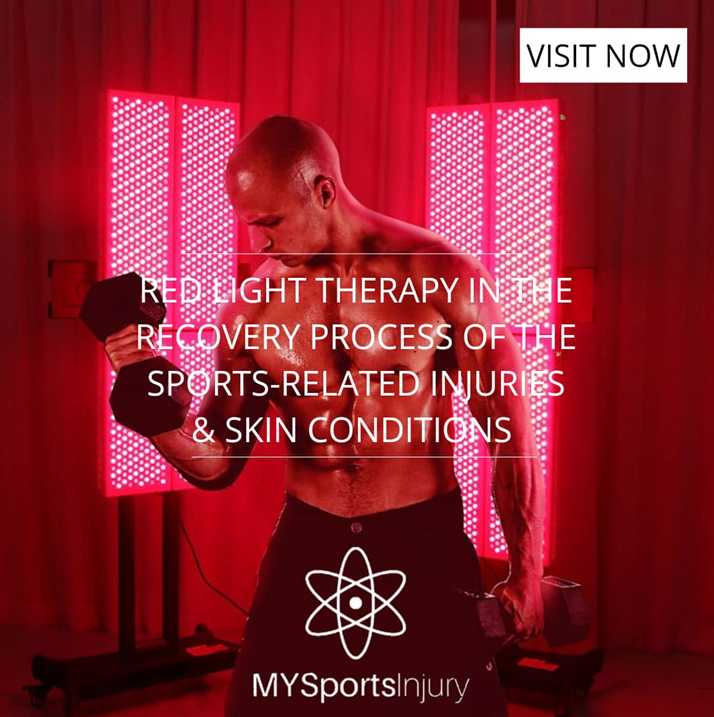
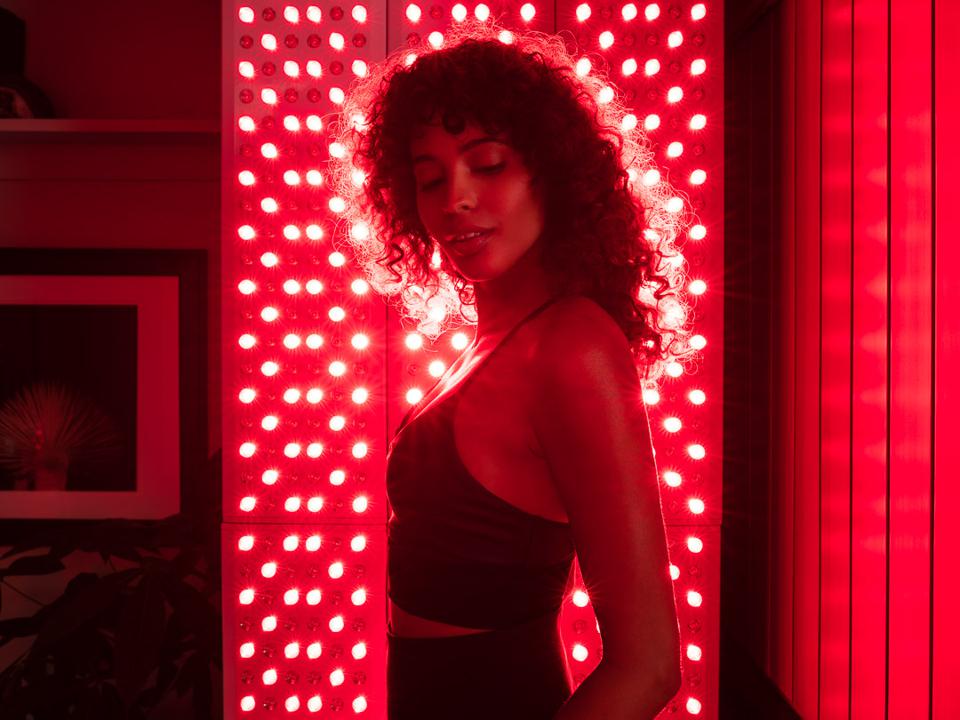
Infrared light replenishes dermal and epidermal cells. It is used to rejuvenate the skin and heal wounds, cuts, and damaged skin.
Red light stimulates collagen production and promotes circulation. It is used to rejuvenate the skin and to reduce wrinkles, scars, and even skin tone. It is also employed in diminishing pain by stimulating optimal cell function.
Yellow light reduces swelling, redness and inflammation. It is used to heal sunburn.
Blue light has antibacterial properties. It is used against acne to purify the skin, regulate the sebaceous glands and calm inflammation.
WHAT IS RED LIGHT THERAPY?
Red Light Therapy is a nascent physical therapy treatment which has demonstrated to get good outcomes at dealing with acne, signs of aging, scars, wrinkles, and most commonly musculoskeletal aches & pains a perfect recovery tool to use. It makes use of a low wavelength red light in order to penetrate deeper into the skin and get to reach the subcutaneous tissue, introducing itself as one of the light therapies which possesses more range when it comes to layers of the skin (Caerwyn Ash et la, 2017).
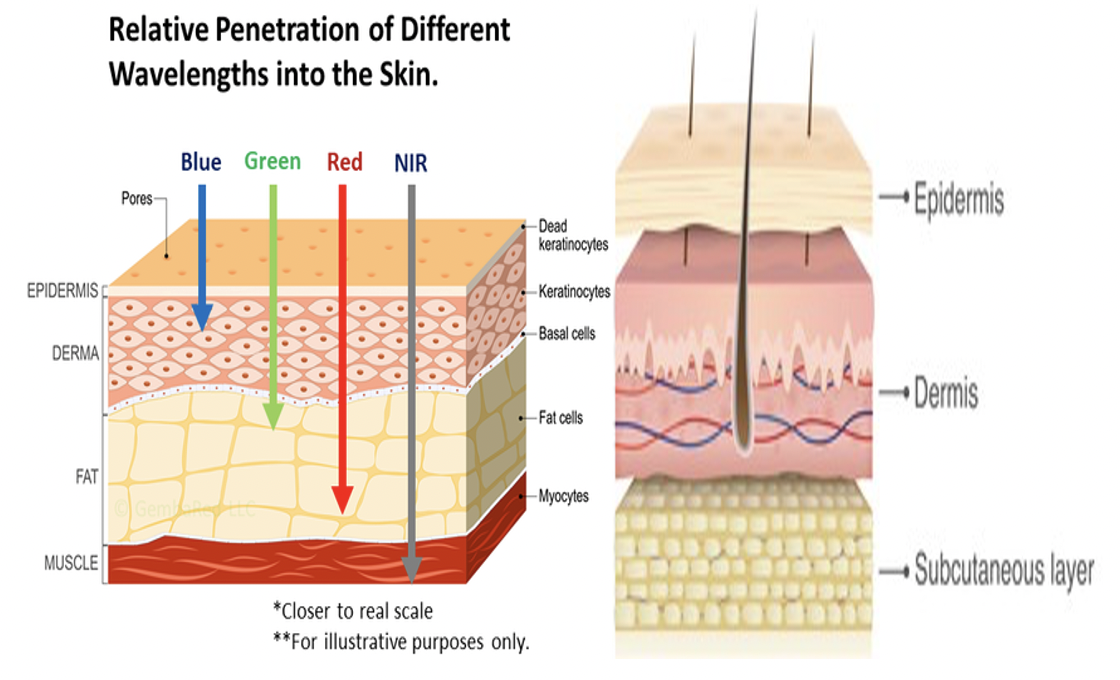
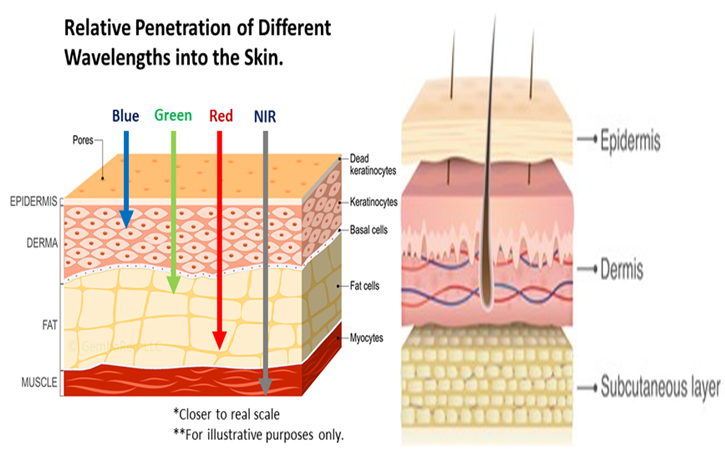
This red light therapy can be also gone by the name of low-level laser light therapy, soft laser therapy, cold laser therapy, non-thermal LED light, low-power laser therapy, biostimulation, photonic stimulation, photobiomodulation, and phototherapy.
SO HOW DOES RED LIGHT THERAPY REALLY WORK?
The working principle of red light therapy is the stimulation of the mitochondria, this is, the organelles inside the cells of our body, which are responsible for producing energy in the form of a molecule called ATP (adenosine triphosphate). If the mitochondria are stimulated with infrared radiation, they can produce more ATP, which the cell then uses to regenerate and repair damage, or in other words, rejuvenate by boosting new cell growth (Joseph Tafur et la, 2008). In fact, aging is identified as a decrease in the activity of the mitochondria.
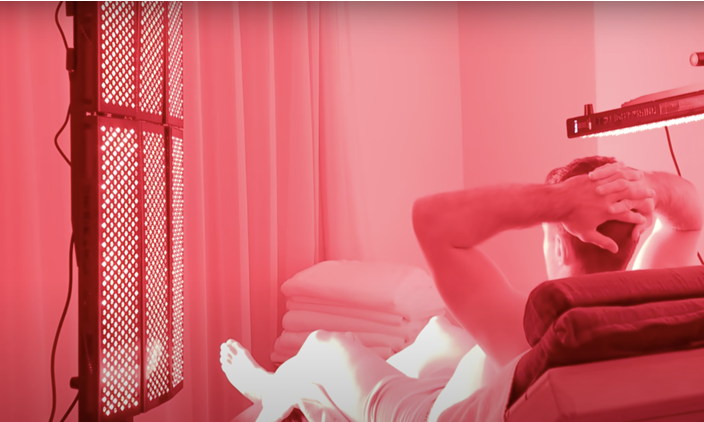
WHAT ARE THE RED LIGHT THERAPY BENEFITS IN SKIN HEALTH?
It can stimulate the amount of collagen produced which provides strength, elasticity, and structure to the skin, enhance fibroblast generation which produces collagen, furthermore, collagen is in charge of building skin since it is a component of the connective tissue, improve blood circulation, and decrease swelling in the cells, amongst others. According to a research it’s been pointed out that low-energy red/near infrared light plays an essential role when treating alopecia, skin rejuvenation, and acne as it has presented safe and effective results (Graeme Ewan Glass, 2021).
When you search red light therapy near me it will show you the best options for you since it is essential to seek out and turn up to your Sports Physio Manchester in order to treat your condition as this red light therapy Manchester strictly needs to be handled by a physiotherapy Manchester specialist, or you can use red light therapy at home but being supervised by our sports massage Manchester specialist in home health care services, feel free to contact us www.mysportsinjury.co.uk/booking
CAN RED LIGHT THERAPY BENEFIT SPORTS-RELATED INJURIES REHAB?
Yes, it can indeed. There are a great number of research studies which claims it. One of the most important benefits that elite athletes can be obtained by undergoing RLT sessions is pain and inflammation relief as it can retard the beginning of musculoskeletal fatigue in high-intensity activities regardless of blood lactate levels being boosted (Leal Junior et la, 2009). Particularly, red light therapy can get you a rapid recovery, reduce both inflammation and fatigue before and after physical activity albeit better outcomes were seen in post-groups (Filipe Abdalla Dos Reis et la, 2014), and diminish soreness.
Some of the proven sports physiotherapy treatments programs which can be found at Our Sports Therapy Manchester Clinic are Myofascial Release, Deep Tissue Massage, Sports Massage Manchester, Manual Therapy, Sports Physical Therapy, ´Physical Conditioning, Sports-Related Injuries, Acupuncture in Manchester, Dry needling, Osteopathy, Red Light Therapy Manchester, and Body Postural Rehabilitation.
Red light therapy is able to enhance sports performance by using it during pre and post workout as it can markedly maximise results.
It is an exceptional option for faster sports injuries recovery such as sprained muscles, tendon injuries, injury aches, and bone repair in some cases.
There are have been reports of red light therapy benefits in National Football League (NFL) since it has been used in order to try to achieve sleep optimisation, improve cellular regeneration, and aid in the natural anti-inflammatory process, endeavouring to provide the tools required by the American football players to fulfill recovery needs making them be in the best possible conditions for their daily physical activities and sports performance, according to 49ers website.
A study was conducted where the rate of effectiveness obtained was 65.9% for all sports-related injuries that were treated with LLLT (lower level laser therapy). Nevertheless, in some specific the rates of success were considerably higher those conditions were tennis elbow, Achilles tendinitis, and jumper’s knee (Yusuke Morimoto et la, 2013).
HOW LONG SHOULD THE RED LIGHT THERAPY MANCHESTER SESSION LAST?
The treatment usually lasts between 15 and 30 minutes. The skin should be checked every 5 minutes to avoid burns or injuries. The lamp is placed about 60 cm away from the area to be treated. The application ends when the patient starts sweating, then it is considered that the thermoregulation process has been sufficient. For further information & enquiries please visit www.mysportsinjury.co.uk/booking we can arrange Red light therapy for you.
HOW LONG DOES RED LIGHT THERAPY IN MANCHESTER CLINICS TAKE TO START SHOWING FAST RESULTS?
It depends on the type and quality of the skin, but it must be taken into account that a treatment cycle should not be less than 6-8 sessions. It has been proven that outcomes start being noticed after carrying out a daily red light therapy session 3-5 times per week for several months.
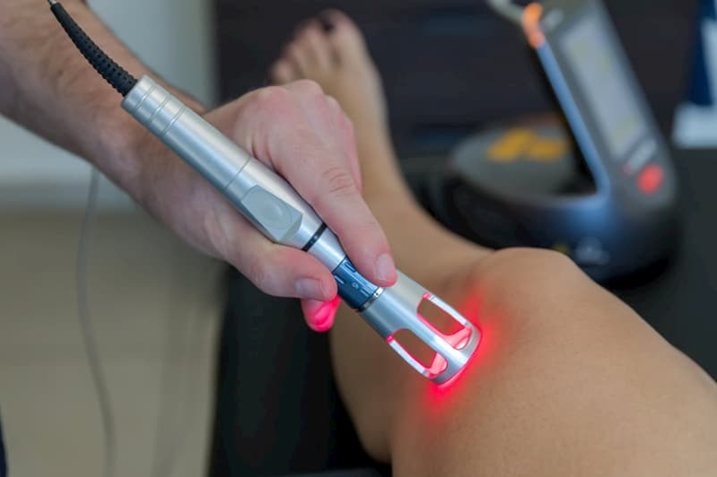
Lower-lever laser therapy programs are also used in post-operative stages due to it is an apt and feasible procedure to minimise post-surgical intervention pain owing to the fact it is noninvasive, safe, and painless (Sholeh Nesioonpour et la, 2014).
Some studies have been made where it is highlighted that RLT can help with sleeping disorders as well because this lower-level light therapy can deal with them by improving the serum melatonin level, and endurance performance of the elite athletes. Hence, you will get a better sleep as result of this practice (Zhao J et la, 2012).
IS INFRARED LIGHT THE SAME AS ULTRAVIOLET LIGHT? IS RED LIGHT THERAPY GENUINELY SAFE?
No, it's not the same. Ultraviolet is below 400 nanometers. The great advantage that red-near-infrared light has over ultraviolet rays is that the latter can damage the skin. Red-infrared light does not.
Red and near infrared light is totally safe even after long periods of exposure (Max Myakishev-Rempel et la, 2012).
With red and near infrared light you cannot tan or burn. While the ultraviolet stays on the surface of your skin, the infrared penetrates up to 7 centimeters inside your skin, even reaching internal organs.
Published by Rafael Peña for www.mysportsinjury.co.uk
References
Pinto HD, Vanin AA, Miranda EF, Tomazoni SS, Johnson DS, Albuquerque-Pontes GM, Aleixo IO Junior, Grandinetti VD, Casalechi HL, de Carvalho PT, Leal-Junior EC. Photobiomodulation Therapy Improves Performance and Accelerates Recovery of High-Level Rugby Players in Field Test: A Randomized, Crossover, Double-Blind, Placebo-Controlled Clinical Study. J Strength Cond Res. 2016 Dec;30(12):3329-3338. doi: 10.1519/JSC.0000000000001439. PMID: 27050245.
Tafur J, Mills PJ. Low-intensity light therapy: exploring the role of redox mechanisms. Photomed Laser Surg. 2008;26(4):323-328. doi:10.1089/pho.2007.2184
Ash, Caerwyn et al. “Effect of wavelength and beam width on penetration in light-tissue interaction using computational methods.” Lasers in medical science vol. 32,8 (2017): 1909-1918. doi:10.1007/s10103-017-2317-4
Glass GE. Photobiomodulation: The Clinical Applications of Low-Level Light Therapy. Aesthet Surg J. 2021 May 18;41(6):723-738. doi: 10.1093/asj/sjab025. Erratum in: Aesthet Surg J. 2022 Jan 19;: PMID: 33471046.
Leal Junior EC, Lopes-Martins RA, Vanin AA, Baroni BM, Grosselli D, De Marchi T, Iversen VV, Bjordal JM. Effect of 830 nm low-level laser therapy in exercise-induced skeletal muscle fatigue in humans. Lasers Med Sci. 2009 May;24(3):425-31. doi: 10.1007/s10103-008-0592-9. Epub 2008 Jul 23. PMID: 18649044.
Dos Reis FA, da Silva BA, Laraia EM, de Melo RM, Silva PH, Leal-Junior EC, de Carvalho Pde T. Effects of pre- or post-exercise low-level laser therapy (830 nm) on skeletal muscle fatigue and biochemical markers of recovery in humans: double-blind placebo-controlled trial. Photomed Laser Surg. 2014 Feb;32(2):106-12. doi: 10.1089/pho.2013.3617. Epub 2014 Jan 23. PMID: 24456143.
Morimoto Y, Saito A, Tokuhashi Y. Low level laser therapy for sports injuries. Laser Ther. 2013;22(1):17-20. doi: 10.5978/islsm.13-or-01. PMID: 24155545; PMCID: PMC3799051.
Nesioonpour S, Mokmeli S, Vojdani S, Mohtadi A, Akhondzadeh R, Behaeen K, Moosavi S, Hojjati S. The effect of low-level laser on postoperative pain after tibial fracture surgery: a double-blind controlled randomized clinical trial. Anesth Pain Med. 2014 Jun 21;4(3):e17350. doi: 10.5812/aapm.17350. PMID: 25237637; PMCID: PMC4165037.
Zhao J, Tian Y, Nie J, Xu J, Liu D. Red light and the sleep quality and endurance performance of Chinese female basketball players. J Athl Train. 2012;47(6):673-678. doi:10.4085/1062-6050-47.6.08
Myakishev-Rempel M, Stadler I, Brondon P, Axe DR, Friedman M, Nardia FB, Lanzafame R. A preliminary study of the safety of red light phototherapy of tissues harboring cancer. Photomed Laser Surg. 2012 Sep;30(9):551-8. doi: 10.1089/pho.2011.3186. Epub 2012 Aug 1. PMID: 22853435; PMCID: PMC3423866
